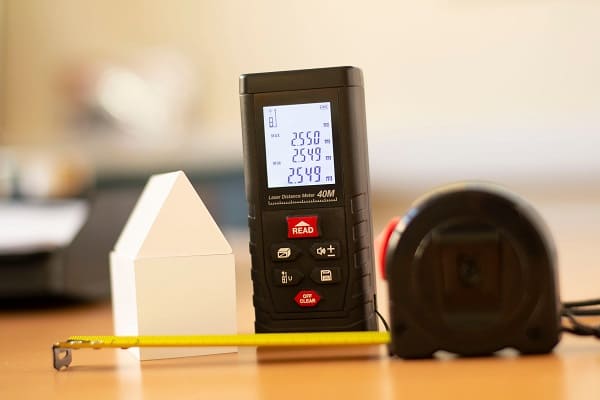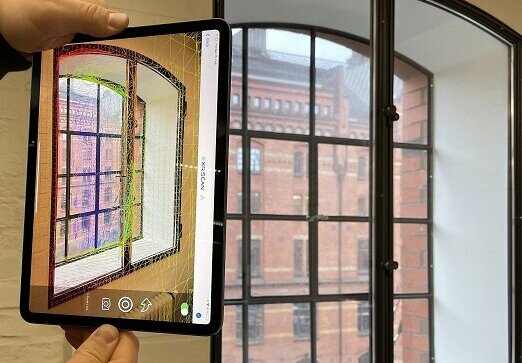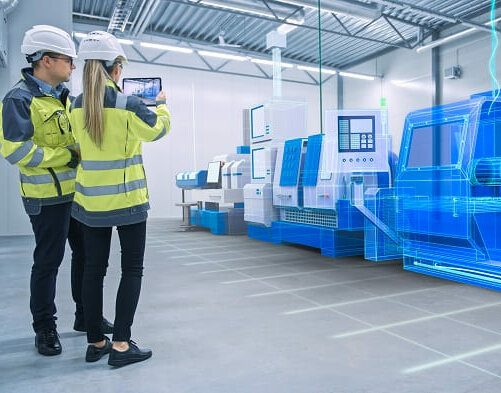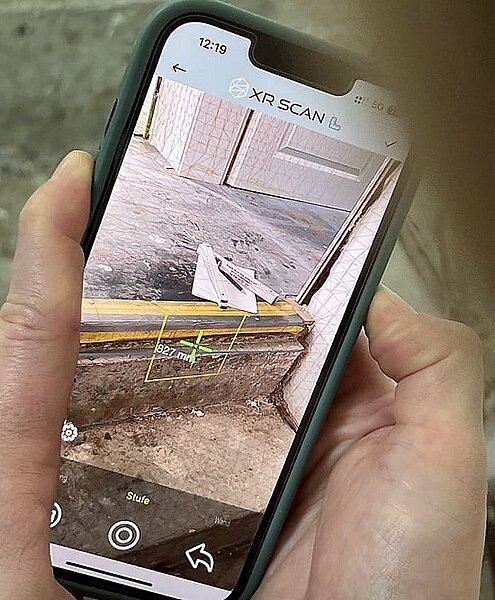Digital construction industry: Time is pressing for SMEs
0.7% of companies in Germany generated 64.3% of sales in 2020 - the remaining 97.3% are SMEs like those in the construction industry. This clear gap between corporations on the one hand and small and medium-sized enterprises on the other is being widened even further by very uneven digitization processes. There is awareness of the problem; growing customer demands on the one hand and inefficient processes on the other are causing the competitive pressure on SMEs to increase enormously, including in the construction industry. High investments are cited as an important reason for continuing to postpone digitization processes. But this calculation does not add up, even in the short term.
Small businesses lag behind
As part of the SMEs, companies in the construction sector score only 5 out of a possible 100 points on the Digital Index, while large companies score an average of 24. If we look at the use of modern ICT and Internet technologies, only 1/3 of SMEs use them intensively or very intensively, while large companies manage 70 %. The differences increase with the size of the company: around 78% of large companies employ IT specialists, while the figure for medium-sized companies is 43% and only 12% for small companies.


Innovation pays off
There is now no question that digitization pays off regardless of the size of the company: The SMEs that invested above average in digitization projects in 2013-2016, for example, and are now considered digitized, subsequently recorded significantly more sales and more employees - within 3 years, 160,000 jobs, €50 billion in additional sales and €20 billion in value added were created over this.
If you ask small and medium-sized enterprises about the opportunities and expectations for digitization in the next few years, those that have already gained digital experience are far more optimistic than those that have so far postponed these steps.
So why are so many companies still waiting?
Barriers to digitization
A new study by Ionos gets to the heart of the matter: 79% of the companies of all sizes surveyed see digitization as an important component of their future viability. Although digital solutions appear to increase revenue and reduce costs, the cost of digitization remains the most frequently cited argument against conversion at 48% - followed by lack of time (46%), security and data protection concerns (39%), lack of expertise (37%) and lack of interest (24%).
Just a knowledge gap? No. The problem is not primarily that the decision-makers in SMEs are not sufficiently informed - it lies in digitization offerings with high financial and personnel entry barriers that also only pay for themselves in the medium or long term. Since digitization strategies to date have required extensive restructuring of the company's own structures and most SMEs are already under strong (competitive) pressure, they simply have too little room for maneuver here - it is not easy for smaller companies to tie capital and skilled workers significantly to a project. What is needed, therefore, are digitization solutions that can be integrated in parallel with ongoing operations, do not require significant investment and do not place an additional burden on skilled workers. Wishful thinking?

Efficiency at the touch of a button
The days when digital solutions only had to be developed individually at great expense are over - if we have our way. As digitization experts specializing in measurement solutions and augmented reality, we know exactly what the pain points of SMEs are and offer precise, complete solutions "off the shelf", cost-effective, flexible and ready for immediate use.
The idea: app-based applications that handle tasks such as digital measurement or AR visualization from A to Z and are both immediately available and immediately usable - without special equipment, long training courses or complex integration. The solutions can be used in isolation, but they can also be integrated into existing IT structures via API.
Spacific's core topic is the issue of digital measurement, which has not yet been satisfactorily solved in the construction industry, especially for smaller providers, here implemented as a 3D scan with LiDAR:
Measurement app XR Scan
Our flexibly configurable standard solution XR Scan ranges from the automatic recognition and calculation of various surfaces to the direct measurement of objects and the automatic creation of 3D models of any environment in real time - without the time-consuming post-processing of point clouds.
Different package sizes and services such as remote rendering offer a profitable solution for every size of company, with which the regularly recurring mammoth task of surveying can be shrunk by about half. The cell phone and tablet app, which can also be used offline, does not require any specialist staff to use - so SMEs in the construction industry can save time and money.


Web AR with XR Scene
Our customers will find an intelligent supplement to digital measurement in the augmented reality offerings from XR Scene. Web-AR in particular is suitable for suppliers in the construction industry, in that individually created offers - from the stairs to the kitchen, the roof or the heating system - are simply sent to the customer as a 3D object via a link, which they can then "try out" to scale on site.
Especially in the high-priced sector of individually designed products, augmented reality demonstrably performs noticeable persuasive work. As a result, suppliers are able to close deals more quickly and significantly increase their sales as well as sales per customer, since customers can see the offers for themselves.
Fazit
Digitization in the construction industry by means of standard solutions on a license basis is not yet available for all tasks and areas. However, where digital solutions can already be implemented sensibly and easily, they are essential building blocks for SMEs to optimize their processes, achieve results faster and more cost-effectively, and participate more equally in the race to catch up with the competition.


